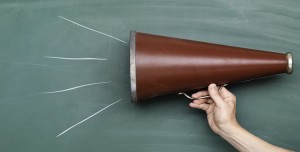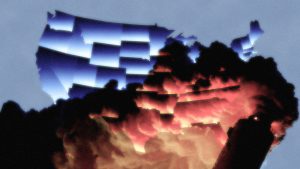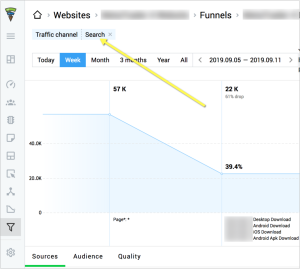The majority of website visits occur on mobile devices, which is why responsive pages are an absolute must. Another necessity is to use images in a proper way to both increase your website traffic and organic search results.
Because quality images take time to load, it is important to optimize them, as to not lose potential mobile-user visitors.
How do images exactly boost your ranking? It’s quite simple, really. Image search is on the rise, which means that properly optimized images will easily land new visitors for your website. That’s why it’s important to upload relevant images — not just any images per se.
And the good news is that this doesn’t necessarily require a huge investment of your time. Have you heard about how to work less, do more?
Google Rules Supreme
Google rules supreme when it comes to the rule of the game for pretty much everything online, which is why SEO has gained a whole new dimension. Re-writers are having difficult times, as high-quality content always ranks better, no matter the quality of optimization.
With so many factors to consider, images are often overlooked, but this practice will cost you visitors in the long run. That’s why it is important to optimize all of the images on your website and establish a routine for the upcoming ones.
Google image search generates 27% of overall daily queries. With the giant having replaced the “View Image” button with the “Visit [the page]” button, more visitors are browsing your homepage every day.
Finally, Google is developing new image recognition tools, as are Google Lens and Reverse Image Search, and developing shoppable ads on Google Images. That is to say that images are a powerful tool to both increase your website traffic and boost sales.
1. Provide Only Relevant Content
Increased traffic means that you need stellar content which is relevant to the image that brought the visitor to the target page. In simple words, when advertising a product, make sure to accompany the image with a product description.
Both the image and the content need to be unique, to the point, well-written and formatted. The image should be of high quality but not too large, as you need to keep mobile users in mind.
2. Take Your Time With Image Names and Description
Because your images will attract new visitors via Google’s image search (for the most part, that is), it is important that they actually appear in search results. To get them there, you’ll need to name them properly and provide relevant image descriptions.
That being said, image names and descriptions basically follow the same rule as written content. Both attributes include target keywords. Unlike the written content, the keywords in image names should be separated by hyphens and not include stop words (prepositions, articles, etc.).
It goes without saying that your website should be responsive, evergreen and feature relevant content.
All images should have proper alt and title attributes because these feats provide context to the image. Make certain they are written properly (using proper grammar is a must!) and concisely.
3. Format Your Images the Right Way
Keeping mobile users in mind, it is necessary that the images be small, while still retaining high quality. How is that done?
For one thing, use the JPEG format whenever possible, as it is both SEO-friendly and image-quality friendly. The PNG format is the right choice only when you need a transparent background, as JPEGs don’t accommodate this option. GIFs should only be used for small-size animations, but remember that they are limited to 256 colors.
As regards image dimensions, there are no general rules unless it be that they shouldn’t exceed the average desktop screen resolutions (2,560 pixels in width, on average). Keep in mind that images adjust to the screen size automatically, meaning they must be formatted properly to always be displayed as they should.
4. Compress Images When Necessary
Sometimes it is impossible to make large images smaller. When this happens, it is recommended to use a different strategy to boost your website’s loading time. Compression is the right way to go about it.
Do not resort to HTML or CSS to reduce pixels because even though the image will get smaller in size, the original file size will remain intact.
There are numerous compression tools out there, many of which are free to use. Some popular apps include GIMP and TinyPNG, but there are also many additional solutions.
Finally, if you want your website to display different image formats to boost visitors’ browsing experience, you can opt for uploading the same image in different dimensions. Simply use a plug-in or the <img srcset=””> attribute to choose which image will be displayed.
5. Brainstorm Supporting Content
Normally, images are there to help content rank better, but when it comes to image search, it’s the other way around. On top of stellar content being the main factor in the overall success of your website, it is also important to note that it should be relevant when it comes to images.
Always keep in mind that visitors reaching your website via Image Search are looking for additional information on the target image. If the image depicts a product, the content should expand on its features.
6. Use Image Reporting to Boost Performance
There’s no point in using images to help your page rank better if you’re doing it randomly and have no idea how effective the performance is.
It is, therefore, important to use image reporting to maximize the performance. Google Search Console is one of the common tools for this purpose, as it is user-friendly and quite insightful.
Here’s how you track the success of your website images:
- Log in to your verified Search Console property.
- Select Performance Report.
- Set the search type to “Image.”
- Click “Apply.”
The search results show various insights, including clicks, queries, CTRs, pages, impressions, devices and countries. However, they do not show image file names. Instead, they show the pages the images are displayed on. Simply put, Google Search Console doesn’t differentiate between different images on a page.
Everything considered, images can boost your SEO efforts dramatically with minimal efforts required on your end. Make certain to grab the opportunity to attract new customers, since image search will be getting more sophisticated in the future.
Digital & Social Articles on Business 2 Community
(39)




